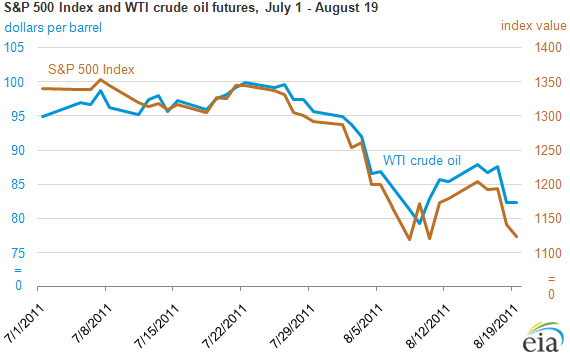
Recently, S&P 500 Index and WTI crude oil futures price movements tracked each other

Note: Closing values at settlement times, 2:30 PM EST for near-month WTI futures prices and 4:00 PM EST for the S&P 500.
Over the past few weeks (July 1 through August 19), the movement of oil prices has closely mirrored that of the Standard and Poors (S&P) 500 Index. Crude oil settlement futures prices for West Texas Intermediate (WTI) crude fell just over 13% while the S&P 500 stock index fell 16% during this period. Recent economic news, such as a downward revision to U.S. GDP for the first half of this year, has provided downward price pressure across many asset classes during recent trading sessions.
The recent strong relationship between oil and equity prices resembles that seen during the economic downturn and recovery in 2008-2010. This contrasts with a weaker correlation between oil and equity prices in the years before 2008 and also with price movements earlier this year, when oil and stock markets decoupled. One notable exception to this recent price correlation came on August 9. When the WTI near-month futures price settled at 2:30 on August 9, the S&P 500 index was roughly unchanged from the day before. However, the S&P 500 index rallied after the close of the WTI near-month futures contract and finished up almost 5% for that trading session.
See EIA's Oil Price Formation website for a discussion of how the historical relationship between oil, equity prices, and other asset classes—for example, currencies, bonds and treasury notes, metals, and agricultural commodities—has changed over time.